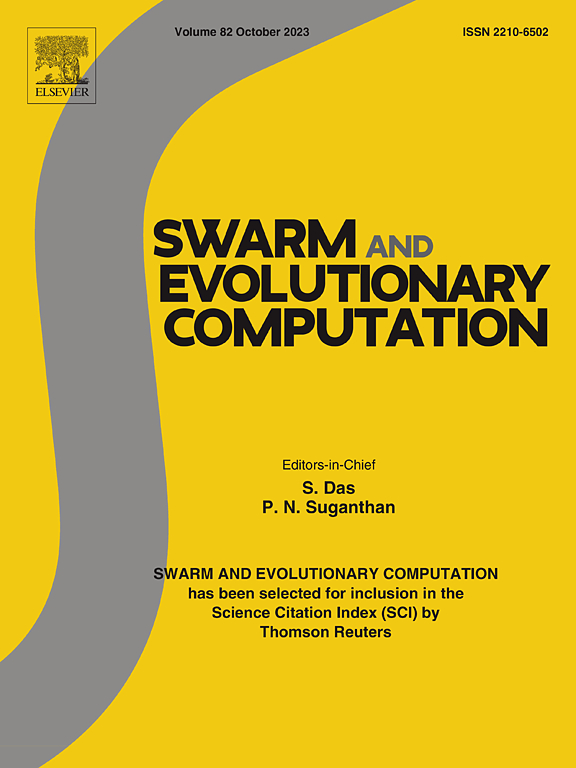OS-BiTP: Objective sorting-informed bidomain-information transfer prediction for dynamic multiobjective optimization
IF 8.2
1区 计算机科学
Q1 COMPUTER SCIENCE, ARTIFICIAL INTELLIGENCE
引用次数: 0
Abstract
Prediction response mechanisms based on transfer learning are extensively prevalent in dynamic multiobjective optimization algorithms (DMOAs), which transform historical information into a new environment for tracking the Pareto set (PS) or front (PF). However, many existing methods learn information of overall changes from old to new populations for prediction. Due to the different characteristics of individual variation within the population, this inevitably causes the valid information of more relevant individuals to be partially weakened during the training process, thus reducing transfer prediction-based accuracy. Therefore, this paper proposes an objective sorting-informed bidomain-information transfer prediction (OS-BiTP) for the DMOA based on individual objective variation, with the aim of transferring individuals within the same characteristics. The three core components in OS-BiTP are variation-based objective sorting (VOS), bidomain-information transfer within objective space (BiTOS), and bidomain-information transfer within decision space (BiTDS). Specifically, VOS divides the current PF into high- and low-objective variation classes and designs a modified linear prediction mechanism to forecast new environmental objective vectors. Afterward, VOS trains an easy transfer learning model to match old and new environmental individuals with the same objective variation classes to increase the transfer efficiency of individuals. To accurately track dynamic PFs and PSs, BiTOS and BiTDS perform intraclass correlation alignment for the same class of objective vectors and nondominated solutions and fine-tune the predicted objective vectors and solutions based on their variation differences. The numerical results demonstrate the superior performance and application of OS-BiTP via a systematic comparison with seven state-of-the-art DMOAs.
求助全文
约1分钟内获得全文
求助全文
来源期刊

Swarm and Evolutionary Computation
COMPUTER SCIENCE, ARTIFICIAL INTELLIGENCEC-COMPUTER SCIENCE, THEORY & METHODS
CiteScore
16.00
自引率
12.00%
发文量
169
期刊介绍:
Swarm and Evolutionary Computation is a pioneering peer-reviewed journal focused on the latest research and advancements in nature-inspired intelligent computation using swarm and evolutionary algorithms. It covers theoretical, experimental, and practical aspects of these paradigms and their hybrids, promoting interdisciplinary research. The journal prioritizes the publication of high-quality, original articles that push the boundaries of evolutionary computation and swarm intelligence. Additionally, it welcomes survey papers on current topics and novel applications. Topics of interest include but are not limited to: Genetic Algorithms, and Genetic Programming, Evolution Strategies, and Evolutionary Programming, Differential Evolution, Artificial Immune Systems, Particle Swarms, Ant Colony, Bacterial Foraging, Artificial Bees, Fireflies Algorithm, Harmony Search, Artificial Life, Digital Organisms, Estimation of Distribution Algorithms, Stochastic Diffusion Search, Quantum Computing, Nano Computing, Membrane Computing, Human-centric Computing, Hybridization of Algorithms, Memetic Computing, Autonomic Computing, Self-organizing systems, Combinatorial, Discrete, Binary, Constrained, Multi-objective, Multi-modal, Dynamic, and Large-scale Optimization.
 求助内容:
求助内容: 应助结果提醒方式:
应助结果提醒方式:


